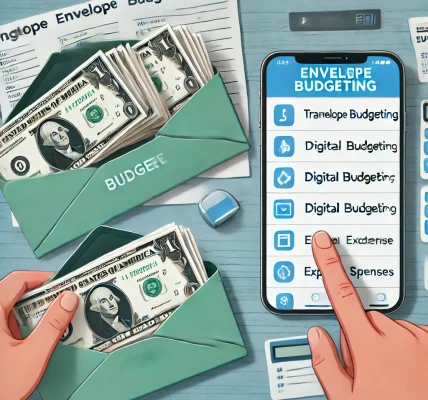Achieving financial independence and retiring early (commonly known as FIRE) is a dream for many. It requires careful planning, disciplined budgeting, and a long-term commitment to saving and investing. Whether you want to leave the workforce in your 40s, 50s, or simply retire a few years earlier than the traditional age, mastering your budget is the foundation of this ambitious goal.
In this comprehensive guide, we’ll explore practical steps to budget for financial independence and set you on the path to an early retirement.
Understanding Financial Independence and Early Retirement (FIRE)
Financial independence means having enough savings and investments to cover your living expenses without needing to work. The early retirement aspect focuses on achieving this goal before the conventional retirement age (65 years old).
Two key principles of the FIRE movement are:
- Aggressive Saving: Saving a significant portion of your income (often 50% or more).
- Smart Investing: Building a diversified investment portfolio to generate passive income.
Step 1: Set Clear Financial Independence Goals
Start by defining your version of financial independence. Ask yourself:
- What age do you want to retire?
- How much annual income will you need?
- What lifestyle do you envision in retirement?
Use the 25x Rule as a benchmark: Multiply your annual expenses by 25 to estimate the amount you need to retire. For instance, if you plan to spend $40,000 per year, you’ll need $1 million saved.
Step 2: Track and Analyze Your Current Expenses
Understanding your current spending is critical to creating an effective budget. Follow these steps:
- Record All Expenses: Track everything you spend for 2-3 months.
- Categorize Your Spending: Divide your expenses into fixed (rent, insurance) and variable (entertainment, dining).
- Identify Areas to Cut: Look for non-essential costs to reduce or eliminate.
Budgeting apps like Mint, YNAB (You Need a Budget), and Personal Capital can automate this process.
Step 3: Create a FIRE Budget
A FIRE-focused budget emphasizes high savings rates and efficient spending. Follow these guidelines:
- Aim for a 50-70% Savings Rate
- Cut unnecessary expenses.
- Increase your income through side hustles or career advancement.
- Adopt the 50/30/20 Rule (Modified for FIRE)
- 20% Needs (Housing, Utilities)
- 10% Wants (Entertainment, Travel)
- 70% Savings/Investments
- Use Zero-Based Budgeting
- Allocate every dollar to a category (including savings).
Step 4: Maximize Your Income
Increasing your income accelerates your journey to financial independence. Consider these strategies:
- Negotiate Your Salary: Request a raise or promotion.
- Side Hustles: Explore freelance work, consulting, or online businesses.
- Passive Income: Invest in dividend-paying stocks, rental properties, or digital products.
Step 5: Reduce Major Expenses
Cutting large recurring costs has a profound impact. Focus on these categories:
- Housing: Consider downsizing, relocating to a lower-cost area, or house hacking (renting part of your home).
- Transportation: Avoid new car loans; opt for used vehicles or public transit.
- Food: Meal planning and home cooking reduce grocery and dining-out expenses.
Step 6: Invest Wisely for Long-Term Growth
Investing is essential to grow your wealth. Consider these options:
- Index Funds and ETFs: Low-cost, diversified investments.
- Retirement Accounts: Maximize contributions to 401(k), IRA, and Roth IRA accounts.
- Real Estate: Rental properties can provide passive income and tax benefits.
- Tax Efficiency: Utilize tax-advantaged accounts to minimize your tax burden.
Pro Tip: Follow a “buy and hold” strategy to capitalize on compound growth over time.
Step 7: Plan for Healthcare and Emergencies
Healthcare is a major expense, especially in early retirement. Secure your future with these steps:
- Health Savings Account (HSA): Tax-free medical expense savings.
- Insurance: Maintain essential health and disability coverage.
- Emergency Fund: Keep 6-12 months’ worth of expenses in a liquid savings account.
Step 8: Regularly Monitor and Adjust Your Budget
Consistency and adaptability are key to staying on track. Review your progress quarterly and make adjustments as needed.
Checklist for Reviews:
- Are you meeting your savings rate?
- Are your investments growing as expected?
- Have you cut unnecessary expenses?
Step 9: Embrace a Frugal, Intentional Lifestyle
Living below your means is the foundation of financial independence. Adopt these habits:
- Minimalist Mindset: Prioritize experiences over possessions.
- Debt-Free Living: Avoid consumer debt and pay off existing loans.
- Community: Connect with other FIRE enthusiasts for motivation and advice.
Case Study: Achieving FIRE in 10 Years
Profile:
- Income: $100,000/year
- Expenses: $40,000/year
- Savings Rate: 60% ($60,000/year)
Outcome: By investing aggressively in index funds with a 7% annual return, they accumulated $1 million in 10 years and achieved financial independence.
Conclusion: Start Your Journey to Early Retirement Today
Budgeting for financial independence and early retirement is a rewarding challenge. By setting clear goals, cutting expenses, increasing income, and investing wisely, you can accelerate your path to financial freedom.
Start today, stay consistent, and enjoy the peace of mind that comes with knowing you’re in control of your financial future.
Disclaimer: This content is for informational purposes only and does not constitute financial advice. Consult a financial professional before making investment decisions.




